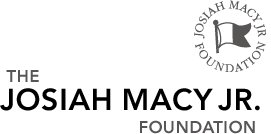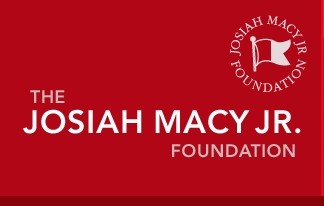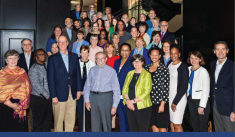Our Grantees
Across the Foundation’s priority areas, our grantees are working to improve the health of the public through innovative research and programs. The Foundation awards up to 40 grants on a rotating schedule each year.
New Models for Dental Education
Dental education is confronting serious educational and financial challenges. State financial support for dental education has declined sharply over the past 15 years, prompting schools to increase tuition and provide only minimal increases in faculty salaries and expenditures for equipment and physical facilities.
The results might have been predicted: few students now come from lower income families and underrepresented minorities; buildings and equipment need to be replaced; and 10 percent of faculty positions are unfilled. Indeed, many schools find it difficult to provide students with the latest science and technology needed to practice dentistry at the very time significant advances are being made in the ability to provide dental care, and when patients who need dental care are becoming both older and sicker.
At the same time many dental schools, already seen as marginal in the university structure, lack the resources and staff for faculty to engage in meaningful research and scholarly activities. Already seven research universities have closed their dental schools, and although three new schools have opened, two are located in private, for-profit universities and the third is in a state school and funded through Medicaid. Consequently, those new schools, too, lack the resources for quality faculty research and scholarly activities.
The future looks even worse. The supply of dentists is projected to decline by 15 percent over the next two decades and most schools lack the resources to expand class size. Such a supply reduction will make existing access problems of lower income and minority families even worse and threatens to spread those problems to middle-class families, especially in rural areas.
Searching for ways to reverse this situation, several years ago the coinvestigators led a study-initially funded by the Macy Foundation-that used inner city dental practices to provide clinical instruction for fourth-year dental students. That study proved so successful that it later spread throughout the country, with major backing from the Robert Wood Johnson Foundation, and later from the Kellogg Foundation and the California Endowment. Among its goals, the expanded program aimed to improve access to dental care for underserved populations; to improve the clinical education of senior dental students; and to increase the numbers of underrepresented minorities entering the dental profession.
Now, building upon their earlier work and their long careers of leadership in academic dentistry, the co-investigators are targeting the entire field of dentistry, hoping to offer a new model for dental education that strengthens programs in basic medical sciences, clinical dental sciences and treatment planning. They also propose that students ought to have a year of residency training before entering practice.
Their project has three goals:
- To develop new models of dental education that address the financial and educational challenges now confronting dental education and that have impact on access to dental care;
- To assess the economic and political feasibility of more promising models; and
- To convene a national conference of leaders and experts to gain support for one or more of the proposed models.
A National Advisory Committee, composed of leaders from dental education and practice, medicine, public health and consumer groups, will provide overall guidance and help identify the most promising programs. Strategies already being considered include integrating basic science instruction for dental and medical students, creating regional schools for clinical dental education, and basing secondary clinical training and residency programs in community clinics.
Participants in the national conference will review the most promising models and help generate the support for needed changes. The final step will be to develop a proposal for a large demonstration project that will be submitted to federal funding agencies and/or large medical/health care foundations.




 11.13.18
11.13.18